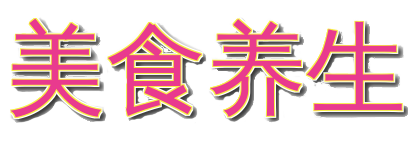中国饮食文化的英文手抄报题材The history of Britain has played a large part in it's traditions, it's culture - and it's food. The Romans for instance brought us cherries, stinging nettles ( to be used as a salad vegetable), cabbages and peas, as well as improving the cultivation of crops such as corn. And they brought us wine! The Romans were prolific road builders, these roads allowing for the first time the easy transportation of produce throughout the country. The Saxons were excellent farmers and cultivated a wide variety of herbs. These were not used just for flavour as they are today but were used as bulk to pad out stews. The Vikings and Danes brought us the techniques for smoking and drying fish - even today the North East coasts of England and Scotland are the places to find the best kippers - Arbroath Smokies, for example. "Collops" is an old Scandinavian word for pieces or slices of meat, and a dish of Collops is traditionally served on Burns Night (25th January) in Scotland. York Ham is a great favourite with the British housewife. The first York Ham is said to have been smoked with the sawdust of oak trees used in the building of York Minster.The Normans invaded not only our country but also our eating habits! They encouraged the drinking of wine and even gave us words for common foods - mutton (mouton) and beef (boeuf) for example. In the 12th century the Crusaders were the first Britons to taste oranges and lemons whilst in Jaffa in 1191-2.Britain has always been a great trading nation. Saffron was first introduced into Cornwall by the Phoenicians at a very early date when they first came to Britain to trade for tin. Derived from the dried and powdered stigmas of the saffron crocus, saffron is still used today in British cooking. The importation of foods and spices from abroad has greatly influenced the British diet. In the Middle Ages, wealthy people were able to cook with spices and dried fruits from as far away as Asia. It has been said however that the poor people were lucky to eat at all!In Tudor times, new kinds of food started to arrive due to the increase in trade and the discovery of new lands. Spices from the Far East, sugar from the Caribbean, coffee and cocoa from South America and tea from India. Potatoes from America began to be widely grown. Eccles Cakes evolved from Puritan days when rich cakes and biscuits were banned.Turkeys were bred almost exclusively in Norfolk up until the 20th century. In the 17th century, turkeys were driven from Norfolk to the London markets in great flocks of 500 birds or more. Their feet were sometimes bandaged to protect them. Upon arrival in London, they had to be fattened up for several days before market.The growth of the Empire brought new tastes and flavours - Kedgeree, for example, is a version of the Indian dish Khichri and was first brought back to Britain by members of the East India Company. It has been a traditional dish at the British breakfast table since the 18th and 19th centuries.Nowadays you can sample cuisines from all around the world - chinese, indian, italian, french, american, spanish, thai, etc., reflecting the ethnic diversity of Britain today as well as the modern ease of travel. Some would even claim 'Curry' to be a traditional British dish - although it bears little resemblance to the curries to be found in India!So what is British cuisine? Roast Beef and Yorkshire Pudding, Steak and Kidney Pie, Trifle - these are the dishes that everyone associates with Britain. But like the country of Britain which is constantly changing and evolving, so is British food, and whilst today these dishes are 'traditionally British', in the future perhaps dishes such as the British Curry will join them!望采纳。关于中国的美食文化由于中国幅员辽阔,地大物博,各地气候、物产、风俗习惯都存在着差异,长期以来,在饮食上也就形成了许多风味。中国一直就有“南米北面”的说法,口味上有“南甜北咸东酸西辣”之分,主要是巴蜀、齐鲁、淮扬、粤闽四大风味有巢氏 当时人们不懂人工取火和熟食。饮食状况是茹毛饮血,不属于饮食文化。燧人氏 钻木取火,从此熟食,进入石烹时代。主要烹调方法:①炮,即钻火使果肉而燔之; ②煲:用泥裹后烧; ③用石臼盛水、食,用烧红的石子烫熟食物; ④焙炒:把石片烧热,再把植物种子放在上面炒。伏羲氏 在饮食上,结网罟以教佃渔,养牺牲以充庖厨。黄帝 中华民族的饮食状况又有了改善,皇帝作灶,始为灶神,集中火力节省燃料,使食物速熟,而广泛使用在秦汉时期,当时是釜,高脚灶具逐步退出历史舞台,"蒸谷为饮,烹谷为粥"首次因烹调方法区别食品,蒸锅发明了,叫甑。
蒸盐业是黄帝臣子宿沙氏发明,从此不仅懂得了烹还懂得调,有益人的健康。周秦时期 中国饮食文化的成形时期,以谷物蔬菜为主食。春秋战国时期,自产的谷物菜疏基本都有了,但结构与现在不同,当时早田作业主要是:稷,(最重要)是小米,又称谷子,长时期占主导地位,为五谷之长,好的稷叫梁之精品又叫黄梁。黍,是大黄粘米仅次于稷,又称粟,是脱粒的黍。麦,大麦。菽,是豆类,当时主要是黄豆,黑豆。麻,即麻子。菽和麻都是百姓穷人吃的,麻又叫苴。南方还有稻,古代稻是糯米,普通稻叫粳秫,周以后中原才开始引种稻子,属细粮,较珍贵。
菰米, 是一种水生植物茭白的种子,黑色,叫雕胡饭,特别香滑,和碎瓷片一起放在皮袋里揉来脱粒。汉代 中国饮食文化的丰富时期,归功于汉代中西(西域)饮食文化的交流,引进石榴、芝麻、葡萄、胡桃(即核桃)、西瓜、甜瓜、黄瓜、菠菜、胡萝卜、茴香、芹菜、胡豆、扁豆、苜蓿(主要用于马粮),莴笋、大葱、大蒜,还传入一些烹调方法,如炸油饼,胡饼即芝麻烧饼也叫炉桡。淮南王刘安发明豆腐,使豆类的营养得到消化,物美价廉,可做出许多种菜肴,1960年河南密县发现的汉墓中的大画像石上就有豆腐作坊的石刻。东汉还发明了植物油。在此以前都用动物油,叫脂膏,带角的动物油叫脂,无角的如犬,叫膏。脂较硬,膏较稀软,植物油有杏仁油,奈实油,麻油,但很稀少,南北朝以后植物油的品种增加,价格也便宜。
唐宋 饮食文化的高峰,过分讲究。“素蒸声音部、罔川图小样”,最具代表性的是烧尾宴。关于食品安全的手抄报资料食品(食物)的种植、养殖、加工、包装、储藏、运输、销售、消费等活动符合国家强制标准和要求,不存在可能损害或威胁人体健康的有毒有害物质以导致消费者病亡或者危及消费者及其后代的隐患,食品安全既包括生产安全,也包括经营安全;既包括结果安全,也包括过程安全;既包括现实安全,也包括未来安全。看经营者是否有营业执照,其主体资格是否合法。看食品包装标识是否齐全,注意食品外包装是否标明商品名称,配料表、净含量、厂名、厂址、电话、生产日期、保质期、产品标准号等内容。看食品的生产日期及保质期限,注意食品是否超过保质期。看产品标签,注意区分认证标志。看食品的色泽,不要被外观过于鲜艳、好看的食品所迷惑。看散装食品经营者的卫生状况,注意有无健康证,卫生合格证等相关证照,有无防蝇防尘设施。
看食品价格,注意同类同种食品的市场比价,理性购买“打折”、“低价”、“促销”食品。购买肉制品、腌腊制品到规范的市场、“放心店”购买,慎购游商(无固定营业场所、推车销售)销售的食品。妥善保管好购物凭据及相关依据,以便发生消费争议时能够提供维权依据.扩展资料食品安全国家标准由卫生部负责制定。制定食品安全国家标准,应当依据食品安全风险评估结果并充分考虑食用农产品质量安全风险评估结果,参照相关的国际标准和国际食品安全风险评估结果,广泛听取食品生产经营者和消费者的意见,并经食品安全国家标准审评委员会审查通过。制定食品安全国家标准是有严格程序的,一般分为以下几个步骤:制定标准研制计划、确定起草单位、起草标准草案、征求意见、委员会审查、卫生部批准。美食手抄报怎么写?1、肯定是有个大标题2、图案内容手绘的可以有一个胖胖的厨师或者其他菜式的卡通 不会画的话可以剪下杂志或者报纸上的美食图案粘贴 3、关于手抄报的文字内容:这部分我认为范围比较广,关于美食的都可以,这样会使手抄报的内容丰富多彩。
1)著名的美食家介绍2)著名的美食城市,各地特色小吃与风味,也可以介绍它们的来历与特色3)最普遍的,就是介绍几样特色的或者家常的菜的做法4)如果是学生党,可以谈谈自己下厨的经历,或者介绍自己品尝美食的经历5)有的动漫或者动画片就是有关于美食的,安排出一个版块介绍这个也是一个亮点。
版权声明
本文仅代表作者观点,不代表本站立场。
本文系作者授权发表,未经许可,不得转载。













发表评论